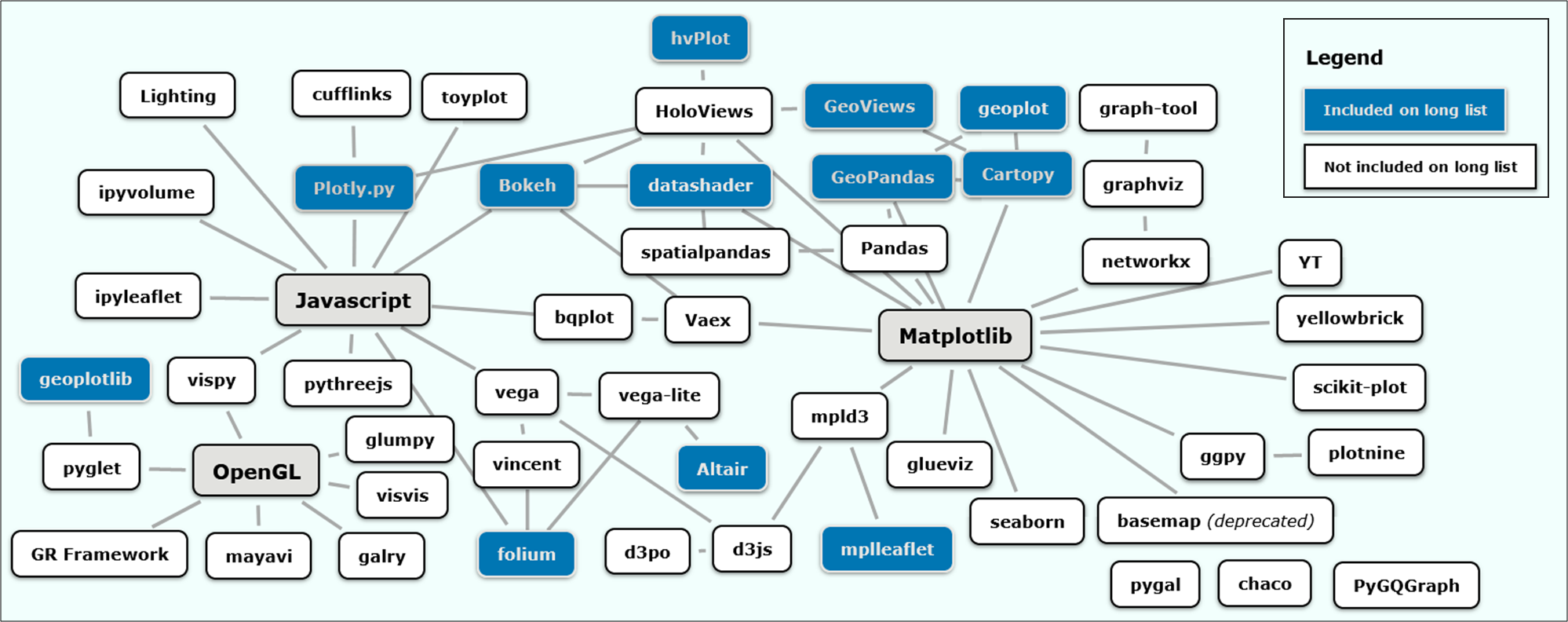Python for Smarter Cities: Comparison of Python libraries for static and interactive visualisations of large vector data
Local governments, as part of 'smart city' initiatives and to promote interoperability, are increasingly incorporating open-source software into their data management, analysis, and visualisation workflows. Python, with its concise and natural syntax, presents a low barrier to entry for municipal staff without computer science backgrounds. However, with regard to geospatial visualisations in particular, the range of available Python libraries has diversified to such an extent that identifying candidate libraries for specific use cases is a challenging undertaking. This study therefore assesses prominent, actively-developed visualisation libraries in the Python ecosystem with respect to their suitability for producing visualisations of large vector datasets. A simple visualisation task common in urban development is used to produce near-identical thematic maps across static and an interactive 'tracks' of comparison. All short-listed libraries were able to generate the sample map products for both a small and larger dataset. Code complexity differed more strongly for interactive visualisations. Formal and informal documentation channels are highlighted to outline available resources for flattening learning curves. CPU runtimes for the Python-based portion of the process chain differed starkly for both tracks, pointing to avenues for further research. These results demonstrate that the Python ecosystem offers local governments powerful tools, free of vendor lock-in and licensing fees, to produce performant and consistently formatted visualisations for both internal and public distribution.
PDF Abstract